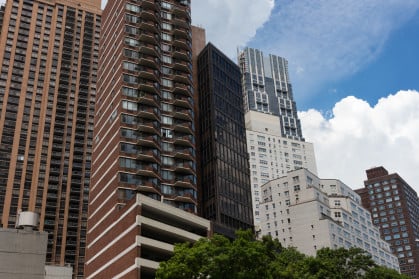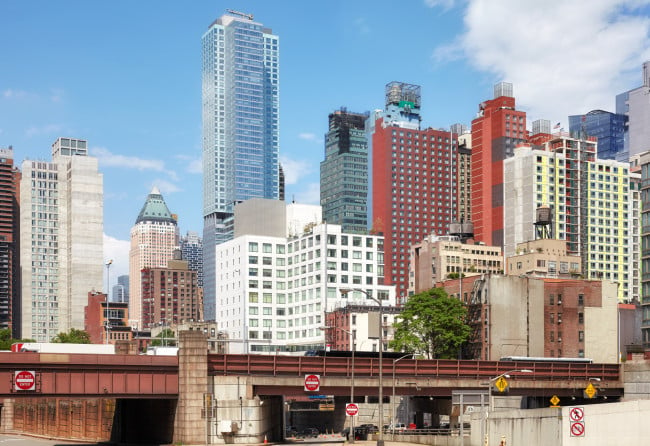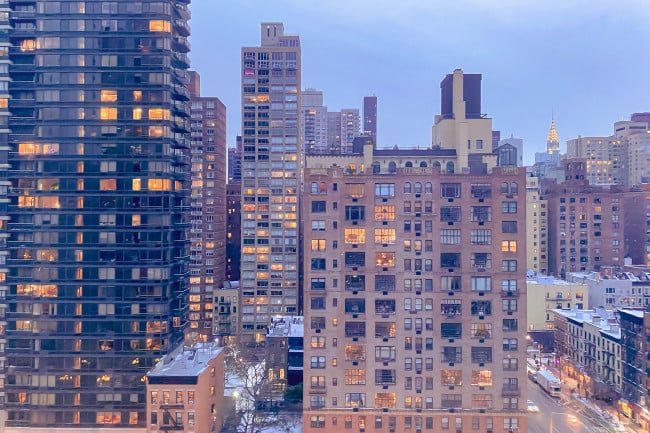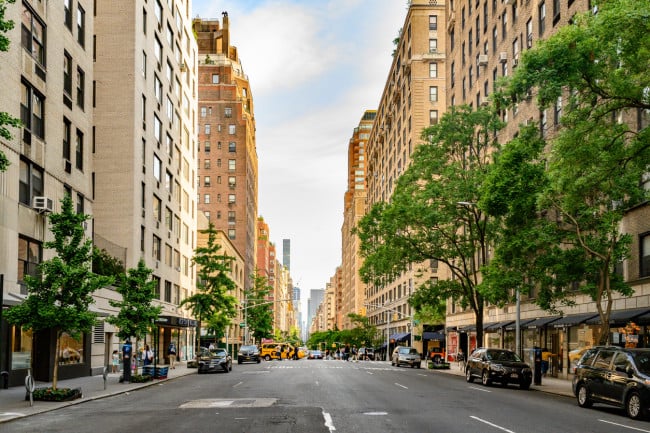- The Fannie Mae unavailable list reportedly has 39 NYC buildings and is expected to grow
- Mortgage lenders can't close and sell loans to Fannie Mae in buildings on the list
- The list is not public; it is only available for view by Fannie Mae lender partners

Orest Tomaselli of CondoTek says a condo or co-op building can land on the list if it has violations related to structural or mechanical repairs that need to be completed.
benedek/E+ via Getty Images
Imagine a New York City co-op or condo building that certain lenders won’t touch: It could be a nightmare situation for a buyer, seller, and the building in general.
That scenario is the new reality for nearly 40 apartment buildings in NYC that appear on a list putting them off limits for Fannie Mae lenders—and there is the potential for that number to grow exponentially in the next couple of years, according to at least one real estate professional. While some real estate lawyers and mortgage brokers that Brick Underground spoke to have not yet encountered a buyer unable to get financing as a result of this banned building list—they concede it could be a significant problem in the near future.
Orest Tomaselli is the president of the project approval division at CondoTek, which provides data on condos for lenders, and the CEO and president of Strategic Inspections, which conducts co-op and condo reserve studies. He sounded the alarm about the Fannie Mae unavailable condo and co-op list in a recent post on his firm’s website.
More than 1,400 U.S. condo and co-op buildings have been added to this list since 2022 and thousands more are likely to be added in 2023, he says, explaining that the unavailable list prevents lenders from closing and selling loans in these designated properties to Fannie Mae. There are 39 condo and co-op NYC buildings on this list, he tells Brick. (CondoTek works with buildings to help get them off the unavailable for lending list.)
What is the Fannie Mae unavailable condo and co-op list?
The list is made up of buildings where Fannie Mae does not buy back loans. It expanded significantly as a result of temporary requirements introduced in response to the Surfside, Florida condo tower collapse in June 2021. Following that tragedy, which occurred after building managers were warned about major structural damage, Fannie Mae, one of the government-backed entities that buys loans from banks, issued new guidance to lenders essentially shutting off loans for buyers in buildings with low reserve funds for structural repairs, among other risky scenarios. [Editor’s Note: After publication, Fannie Mae provided additional clarifications; they have been incorporated into this article. A full statement from a Fannie Mae representative appears at the end of this article.]
Freddie Mac, the other quasi-government agency that buys back conforming loans, also issued similar guidance. Other lenders tend to follow Fannie and Freddie’s lead and are likely to align their rules—and Tomaselli sees this alignment extending to jumbo lenders and underlying mortgage financing as well.
Being on the list means buyers could run into trouble if they’re seeking conforming loans (mortgages that meet Fannie and Freddie guidelines). A higher conforming loan limit for 2023 gives New Yorkers bigger loans that are cheaper and easier to qualify for and depending on how much they are seeking, an alternative to jumbo financing.
“If Fannie Mae is unwilling to purchase loans in ‘unavailable’ condo and co-op properties, few, if any, lenders will extend mortgage financing borrowers in these properties,” Tomaselli writes.
The original goal was to discourage the practice of deferred maintenance in buildings with aging infrastructure—meaning putting off needed repairs because of budget shortfalls. To put some teeth into it, Fannie Mae said it wouldn’t buy back mortgages from condo or co-op developments that used an assessment to pay for repairs involving structural integrity until the repairs have been made.
Buildings that don’t meet eligibility are given the status “unavailable,” (a description that Fannie Mae says pre-dates the Surfside tragedy).
After Surfside, Fannie Mae also took away some flexibility for condo buildings: In the past, condo buildings got around a requirement to set aside 10 percent of their annual operating budget every year to put toward their reserve fund by obtaining a reserve study instead. That’s no longer an option now.
Ryan Greer, senior vice president at National Cooperative Bank (a Brick sponsor), points out that while Fannie Mae’s requirement to collect 10 percent of the operating budget for reserves only applies to condos, not co-ops, NCB does “include a reserve ratio in our financial analysis for co-ops as a measure of overall financial stability.”
Buildings are increasingly using assessments to fund capital improvements or shore up their reserve funds for capital improvements, often in excess of $1 million, he says. “Cooperatives typically offer a discount for payment upfront and will allow shareholders to make payments in installments over two to five years,” he says.
But even though a good majority of NYC buildings do rely on assessments to pay for upgrades, the list of banned buildings has only grown slowly—at least until now.
How does a co-op or condo land on the list?
Tomaselli explains that there are several triggers that can land a building on the list, including when a questionnaire is sent to building management as part of the mortgage application process.
If the building is non-compliant with Fannie Mae guidelines, some lenders may just reject the loan. Others may send the documentation to Fannie Mae and request an override—and that review may be what puts the building on the no-lend list.
Why are some buildings considered unavailable for lending?
There are many reasons why a building may end up on the list, Tomaselli says, but these four reasons are the main ones:
- It doesn't have a 10 percent reserve line item in its operating budget. (Freddie Mac does accept a reserve study in lieu of a reserve fund requirement.)
- It is not compliant with Fannie Mae’s insurance requirements.
- It has violations related to structural or mechanical repairs that need to be completed.
- Investor-owned units exceed Fannie Mae’s maximum thresholds. More than 20 percent of units are owned by one investor or more than 50 percent of units are owned by investors—which can be a problem in rental-to-co-op or rental-to-condo conversions. [Editor’s Note: A Fannie Mae representative says in buildings where 50 percent of the units are owned by investors, individual owners can proceed with transactions, however, Brick has heard of anecdotal reports of buildings impacted by this rule.]
Local Law 97, which requires buildings over 25,000 square feet to reduce harmful gas emissions by 2024, will also likely land “thousands” of buildings on the list in the future, Tomaselli says.
The city estimates about 20 to 25 percent of buildings will exceed their emissions limits in 2024 if no action is taken. Fines will be issued in 2025 if a building exceeds the limits or fails to report its energy use.
“Local Law 97 is going to have a gigantic impact,” he says. If a building receives a Local Law 97 fine for not repairing or replacing its outdated heating system, for example, or the building does not have enough capital in its reserve account to replace those components, then the building would be ineligible for Fannie Mae mortgage financing and is likely to end up on the unavailable list.
How do you find out if your building is on the list?
If you’re a seller, buyer, or on a building board—wouldn’t you want to know if your building is on the list? Good luck with that. The list is not public; it is only available for view by Fannie Mae lender partners. (Tomaselli has seen the list.)
“Unless a lender notifies the property manager or [a board] then there is no official way you find out if you’re on the list,” Tomaselli says. “The lack of transparency is shocking.”
Since the goal of changing Fannie Mae’s guidelines in the wake of the Surfside tragedy was to “make sure buildings pay attention to finance and structural problems, you would think they would want to make sure boards were aware,” Tomaselli says. But the only way a building finds out if it is on the unavailable list is when a buyer applies for mortgage and is informed the building is on the list.
But the sky is not falling yet
Mortgage broker Kevin Leibowitz, founder of Grayton Mortgage, says he hasn’t heard of a NYC deal blowing up because of Fannie Mae’s unavailable list, but sees the potential for problems in buildings where buyers are likely to need a conforming loan.
Still he cautions against overreacting: “Just because a building is on this list doesn’t mean the value of the building is going to become worthless,” he says. That’s especially true in high-end buildings where buyers have lots of options for loans.
These guidelines may create more headaches for jumbo loan borrowers, he predicts. They are already tougher to qualify for—you need a higher credit score and more cash reserves, for example. In other words, lenders are not giving these loans away easily. “It may be worse for the jumbo borrower because there are no more stupid loans anymore,” Leibowitz says.
How to avoid getting your deal derailed by the unavailable list
When you’re buying in NYC, you need an attorney who will dig into the financial health of a building, explains Shaun Pappas, a partner at Starr Associates. That includes reviewing board meeting minutes to see what’s been going on. Be patient and allow your attorney to investigate, he suggests.
A building that has been pre-approved by a lender or where a lender has lent in the past means you’re less likely to run into problems, he adds.
Another strategy in the current market: Requests for financing and funding contingencies to protect the buyer are also making a comeback, he says. These days it’s harder for a seller to push back on those.
Some buildings have not yet put a strategy in place for dealing with Local Law 97, he says, and that has repercussions for lending.
“Everyone in NYC is so busy, and we don’t often look down the road as we should,” he says, adding that “a bank is not going to take a step if a building doesn’t have a plan in place for LL97,” he says. But the outcome may not be that dramatic: The closer we get to these deadlines, two things could happen, he notes: "If buildings aren’t ready, the city will push the dates back. Otherwise banks will have trouble finding buildings they can lend in.”
And that latter scenario will likely prompt banks to come up with workarounds.
As attorney Bettina Miraglia, a partner at DL Partners explains, “We all need residential mortgages. My guess is the banks will figure out solutions,” she says, pointing out how Freddie Mac’s guidelines offered some flexibility to borrowers. That kind of variation is necessary in lending and it's part of the bigger picture. “We need the regional banks, the First Republics,” she adds.
Following publication, a Fannie Mae representative provided this response:
- Fannie Mae does not publish statistics on the number of projects for which we have made eligibility determinations. When we become aware of a circumstance that would cause a project to be ineligible based on our Selling Guide project standards requirements (Selling Guide B4-2) and any Lender Letters, such as LL-2021-14, we communicate that information to Fannie Mae Sellers via Condo Project Manager by making it “unavailable” in CPM. A project’s “unavailable” status can change when sufficient documentation is provided to Fannie Mae to confirm the eligibility issues have been resolved.
- As a secondary market participant, we believe that lenders are in the best position to have conversations with their customers about mortgage finance options for their home purchase and property eligibility requirements.
- Fannie Mae’s temporary condo requirements are an important step to create long-term sustainability for projects facing the challenges of aging infrastructure. These measures help protect borrowers from physically unsafe or financially unstable projects, which includes disclosing any known significant deferred maintenance issues that may impact the safety, soundness, structural integrity, or habitability of a condo or co-op unit, or the overall project and its amenities.
You Might Also Like
Sign Up for our Boards & Buildings Newsletter (Coming Soon!)
Thank you for your interest in our newsletter. You have been successfully added to our mailing list and will receive it when it becomes available.






















